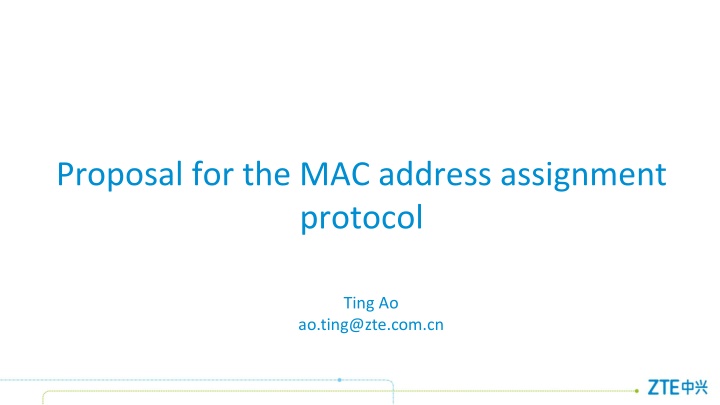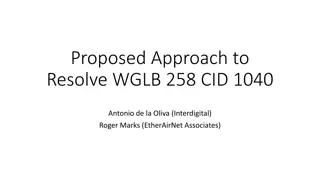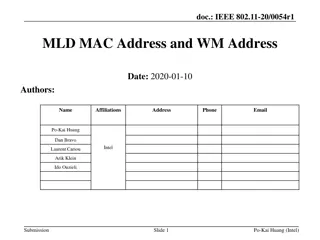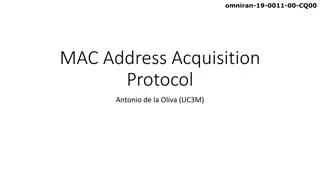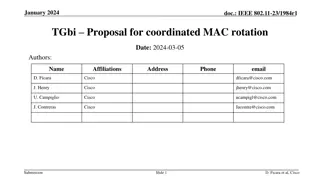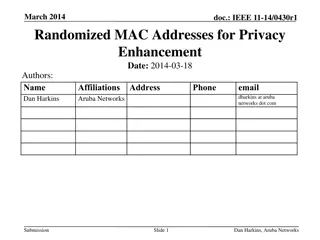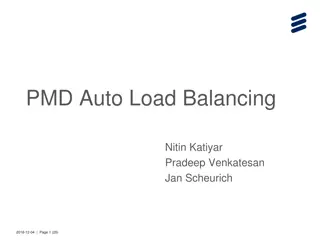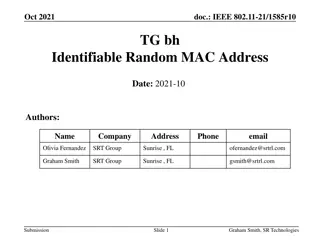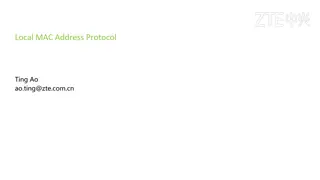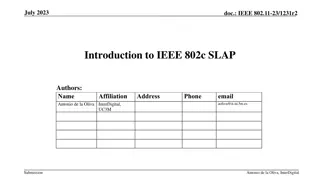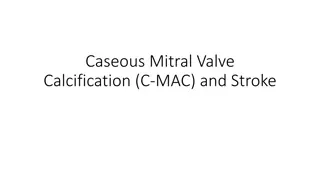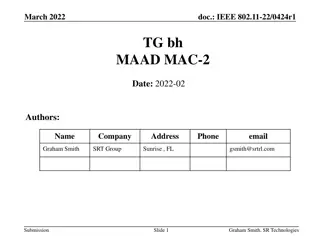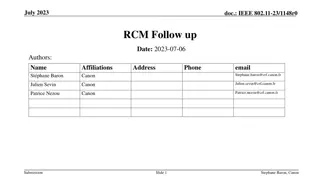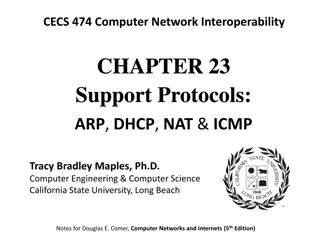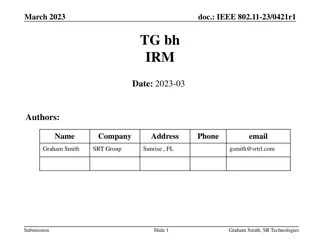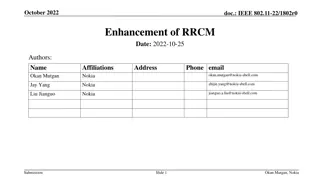Proposal for Local MAC Address Assignment Protocol
This proposal suggests a structured approach for assigning MAC addresses at the local level by incorporating position information into the address format. It addresses common issues faced in MAC address assignment protocols, such as conflicts and broadcast flooding, offering a class-by-class assignment strategy for network devices and hosts. The proposed method aims to improve network efficiency, facilitate fault diagnosis, and enhance the overall performance of MAC address assignment processes.
Uploaded on Mar 08, 2025 | 0 Views
Download Presentation

Please find below an Image/Link to download the presentation.
The content on the website is provided AS IS for your information and personal use only. It may not be sold, licensed, or shared on other websites without obtaining consent from the author.If you encounter any issues during the download, it is possible that the publisher has removed the file from their server.
You are allowed to download the files provided on this website for personal or commercial use, subject to the condition that they are used lawfully. All files are the property of their respective owners.
The content on the website is provided AS IS for your information and personal use only. It may not be sold, licensed, or shared on other websites without obtaining consent from the author.
E N D
Presentation Transcript
Proposal for the MAC address assignment protocol Ting Ao ao.ting@zte.com.cn
Prior Arts Local Address Study Group: P802C:define Local MAC address, almost done. P802.1CQ: A Local Address assignment protocol, on going Problems MAC address assignment protocol faces How to get MAC address without any source address How to locate the MAC address requester when response How to avoid MAC address conflict How to avoid broadcast flooding
Our proposal for Local MAC address protocol Define a structured Local MAC address with position information Like: Bridge ID+Host ID Or:Bridge ID+Port ID+Host ID Take a class-by-class assignment strategy Every network device get a Bridge ID assignment from its upper class network device and inherit Bridge ID of the upper class network device. Every host get a Host ID from network device it connected and inherit Bridge ID from the network device connected. So Bridge ID+ Host ID make up the MAC address of a host.
Take SAI as an example Request Logical DB Response 1E0000000000 2E0000000000 Class 1 Bridge 1 Bridge 2 1E1000000000 2E1000000000 B12 B13 B22 B11 B21 B23 Class 2 1E1000000001 2E1000000002 H 12 H1 H2 H3 H4 H8 H9 H 10 H 11 H7 H5 H6 Note the lenth of the Bridge ID depend on the scale of this class of network device.
Merits Every MAC address is related to its bridge connected No MAC addresss conflict exists Every network device communicate with other device it connected directly No broadcast frames flooded Every network device can keep the mapping between the bridge id/host id assignment and the port. It s easy locate the requester, the port connected is the requester. Every structured Local MAC address is position related. Improve the forwarding performance Easy to locate fault and fault diagnosis
